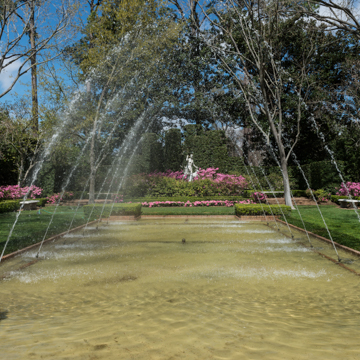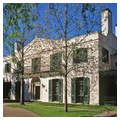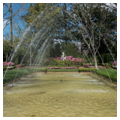Bayou Bend was the home of collector and philanthropist Ima Hogg. Here she assembled her important collection of seventeenth-, eighteenth-, and nineteenth-century American furniture, silver, ceramics, and art, which she opened to the public in 1966 as the Bayou Bend Collection and Gardens of the Museum of Fine Arts. The house was built by Miss Hogg and her brothers, Will C. Hogg and Mike Hogg. The Hogg brothers and their associate Hugh Potter developed River Oaks beginning in 1924.
A country house on a fourteen-acre estate, Bayou Bend's design was based on the early-nineteenth-century, stucco-faced, Spanish Creole buildings of the French Quarter of New Orleans. Ima Hogg coined the term “Latin Colonial” to describe its style, which she and Staub then promoted as more appropriate to the Gulf Coast than the popular Spanish Mediterranean style. Bayou Bend is a symbol of Ima and Will Hoggs' determination to invest unruly Houston with what they understood to be a civilizing Southern identity.
Ima Hogg developed the gardens of Bayou Bend incrementally. In 1934 the East Garden was carried out to the designs of Houston's first resident landscape architect, Ruth London. In 1939, the Diana Garden, on axis with the garden front of the house, was designed by C. C. Fleming and Albert E. Sheppard. The gardens extend the dominant axes of the house into the landscape, systematically integrating architecture and nature.
In 2010 the Lora Jean Kilroy Visitor and Education Center at 1 Westcott Street was opened to become the visitors' gateway to Bayou Bend. The two-story, steel-framed, steel panel–surfaced pavilion, designed by Leslie J. Elkins and Kendall/Heaton Associates, sits in a woodland landscape installed by McDugald-Steele.












